Germany's Renewable Energy Landscape: A Critical Assessment
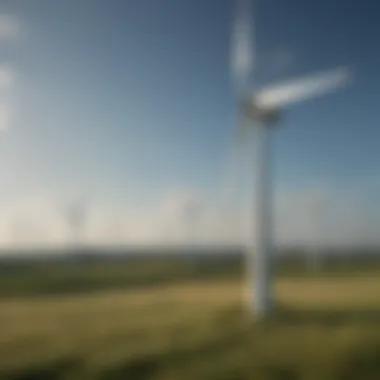

Research Highlights
Overview of Key Findings
Germany's pursuit of renewable energy has transformed its energy landscape over the past few decades. This transformation is not merely a case of policymakers waving their magic wands; it's a thoroughly orchestrated effort involving technological advancements, strategic investments, and regulatory frameworks. Recent studies indicate that in 2022, renewable energy sources accounted for over 42% of the total energy consumed in the country, marking a significant leap towards their ambitious target of 65% by 2030.
The key players in this movement are wind, solar, and biomass energy. For instance, the North Sea and Baltic Sea wind parks have become the backbone of Germany's offshore wind energy. On the solar front, Germany has positioned itself as a leading nation for solar PV installations, with rooftops often adorned with panels like a modern-day sun-worshipping temple.
Significance of the Research
Understanding Germany's renewable energy sector is not only crucial for the nation itself but also has broader implications across Europe. As one of the world's significant energy consumers, Germany's strategy in this arena serves as a blueprint for other nations looking to transition to more sustainable practices. Moreover, the interplay between governmental support, technological innovation, and market dynamics offers valuable lessons in achieving energy independence and resilience.
Original Research Articles
Summary of the Article
The forthcoming sections will evaluate specific governmental policies, explore the contributions of different renewable energy sources, and highlight the challenges that persist amid this paradigm shift. By weaving together statistical data with real-world examples, the article aims to offer readers a nuanced understanding of how Germany is committed to reshaping its energy future. It's not just about making headlines; it's about creating a tangible impact on the ground level.
Author Contributions
In examining the current state of renewable energy in Germany, various authors have contributed their expertise. From energy economists analyzing market impacts to environmental scientists scrutinizing ecological consequences, a diverse array of perspectives comes together to form a comprehensive overview. This multifaceted approach ensures that a range of viewpoints is represented, thus painting a well-rounded picture of this complex topic.
"Germany stands at the forefront of the renewable energy revolution, not just as a leader in adoption but as a source of inspiration for countries worldwide."
By framing these discussions around Germany's policies and initiatives, the research aims to capture the essence of what it means to transition towards a sustainable energy future, all while addressing the inevitable hurdles along the way.
Prologue to Germany's Energy Profile
Germany stands as a beacon of commitment to renewable energy, carving a path for others to follow. The energy profile of Germany is crucial not only for understanding its current energy strategies but also for grasping how these decisions impact the European energy landscape. By dissecting the specifics of this profile, we uncover a tapestry woven from historical practices, evolving technologies, and socio-political dynamics.
The energy profile highlights the country’s shift from fossil fuels towards renewable sources. This journey is driven by necessities such as climate change mitigation and energy security. The historical and contemporary snapshots of Germany's energy strategies reveal the multifaceted nature of their approach.
In this article, we will touch on several important elements:
- The historical foundations of Germany’s energy systems, showcasing how past decisions shape current practices.
- An up-to-date look at the energy mix to grasp the breakthroughs in renewable sources and their share in total energy production.
- Understanding how shifts in energy policy affect not only environmental goals but economic stability as well.
This quest for an efficient and sustainable energy profile presents benefits such as reduced greenhouse gas emissions, job creation in renewable sectors, and enhanced energy independence.
Historical Overview of German Energy Systems
Germany's energy journey has roots reaching back into the industrial-age, characterized initially by a heavy reliance on coal. Following World War II, the energy sector evolved alongside considerable technological advancements and changing public sentiments. The oil crises in the 1970s prompted a reassessment, pushing the country towards diversification of sources.
The introduction of the “Energiewende,” or energy transition, marked a significant pivot towards renewable energy. This ambitious policy aimed at phasing out nuclear energy and reducing greenhouse emissions significantly. Consequently, energy systems reform witnessed the rise of solar and wind energy as viable alternatives, leading to major infrastructural changes.
Key Historical Milestones:
- 1973-74 Oil Crisis: Prompted a search for energy independence.
- 1990s Renewable Energy Sources Act (EEG): Created financial incentives to harness renewable energy.
- 2011 Fukushima Disaster: Accelerated the phase-out of nuclear energy.
Current Energy Mix: A Snapshot
Presently, Germany's energy mix illustrates an interesting shift. As of the latest data, approximately 42% of the energy consumption comes from renewable sources. The country is notable for its investments in solar, wind, and biomass technologies.
- Wind Energy: Dominates renewable sources, particularly in northern regions.
- Solar Power: Has seen exponential growth due to favorable policies and public acceptance.
- Biomass: Used for heating and electricity generation, providing flexibility in energy sources.
This energy mix signifies not just a commitment to sustainability but also strategic adaptations to technological advancements.
"Germany's efforts in boosting renewable energy don’t just benefit the environment; they foster economic growth and regional development."
Defining Renewable Energy
In understanding Germany's energy future, defining renewable energy is paramount. This term encapsulates a broad array of energy sources that are considered sustainable due to their replenishable nature. Today, more than ever, there is a global need to pivot from fossil fuels. With climate change looming large, renewable energy becomes not just an alternative but a necessity. By defining what constitutes renewable energy, we engage in a discussion that shapes policies, investments, and public perceptions about the potentials and challenges in achieving a greener future.
Types of Renewable Energy Sources
Germany's renewable energy portfolio is vibrant, featuring various sources, each with distinct characteristics and contributions.
Solar Energy
Solar energy is perhaps one of the most recognizable forms of renewable energy. The country has invested heavily in solar panels, both on homes and large-scale solar farms. One of the standout attributes of solar energy is its accessibility; anyone can harness sunlight, especially in a country striving for local energy independence.
The unique feature of solar energy lies in its scalability. Homes can opt for small rooftop panels, while larger installations can power entire communities. However, it does have disadvantages. The efficiency largely depends on weather conditions and geographical location. In regions with prolonged periods of cloud cover, the yield is less impressive. Still, solar remains a cornerstone in the transition to sustainable energy in Germany.
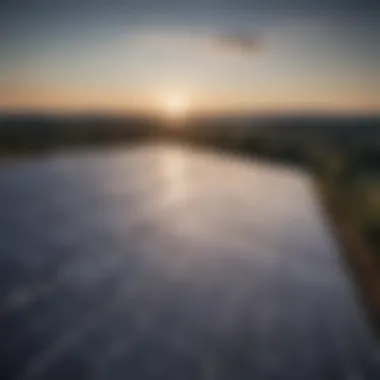
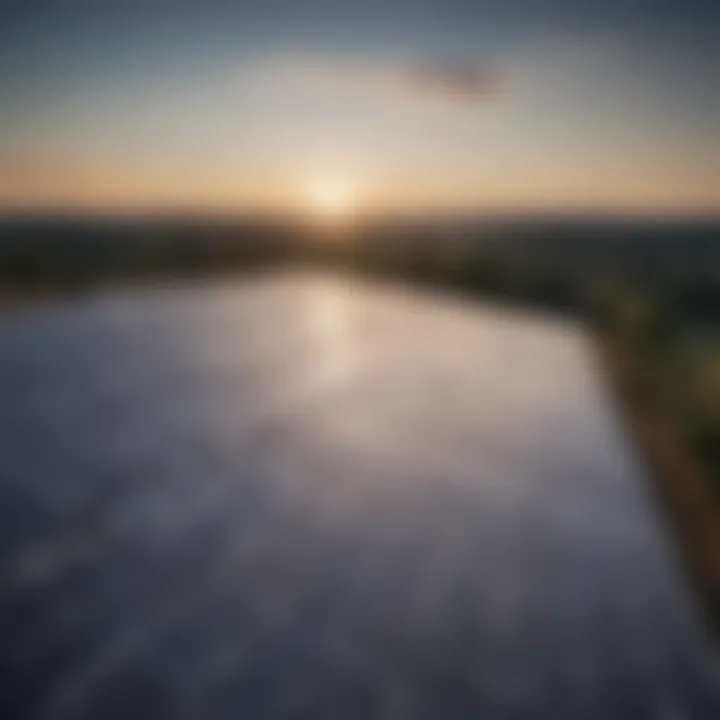
Wind Energy
Wind energy has etched its mark on the German landscape, with wind turbines dotting both onshore and offshore regions. A key characteristic of wind energy is its sheer potential; Germany is one of the world’s leaders in wind power generation. The production capacity from wind energy is noteworthy and aligns with the country's energy targets.
The distinguishing advantage of wind energy is its low operational cost once installed. However, it faces public pushback regarding aesthetic concerns and noise pollution. These challenges must be navigated carefully to ensure continued support for wind energy initiatives.
Hydropower
Hydropower is another significant player in Germany's renewable energy basket. Utilizing the flow of water has been harnessed for centuries, but modern techniques have made it much more efficient. The fundamental characteristic of hydropower is its reliability; it can produce energy consistently compared to weather-dependent sources.
A unique feature of hydropower is its ability to provide both energy and water management solutions, especially in flood-prone areas. However, the ecological impact on aquatic ecosystems remains a contentious issue. Balancing energy needs while safeguarding biodiversity is a challenge that policymakers must address diligently.
Biomass
Biomass is often overshadowed by more prominent renewable sources, but it plays a vital role. It involves using organic materials—like wood, agricultural waste, and even certain garbage—to produce energy. One compelling attribute of biomass is its dual value: it can reduce waste while producing energy.
What sets biomass apart is its ability to store energy; unlike wind or solar, biomass can provide a consistent energy supply. Still, it is worth noting that this energy source comes under scrutiny regarding land use. Converting agricultural lands for energy biomass can raise food security concerns.
Geothermal
Geothermal energy taps into the Earth’s internal heat. Germany has untapped potential in this area, particularly in areas with significant tectonic activity. Its main advantage lies in its constant supply, unlike solar and wind, which fluctuate greatly. The distinctive feature of geothermal energy is that it can provide heat and electricity, making it quite versatile.
But geothermal is not without its downsides. The initial investment can be hefty, and locations for effective drilling might not be broadly available, which can limit its expansion potential.
Understanding Energy Transition Terms
Grasping key terminologies in energy transitions is crucial for grasping the broader picture of shifts towards renewable energy.
Energiewende
The term “Energiewende” represents Germany’s ambitious energy transition initiative that aims to reduce greenhouse gas emissions and increase the share of renewables in the energy mix. At the heart of Energiewende is a transformative vision for a sustainable energy system.
This process underscores the importance of community engagement and technological advancement, aiming to make renewables a mainstay in everyday life. Nevertheless, its challenges include balancing energy supply with demand continuously, especially with intermittent sources like wind and solar.
Decarbonization
Decarbonization is a catchword in today’s energy discussions. It refers to the reduction of carbon dioxide emissions to combat climate change. For Germany, decarbonization aligns seamlessly with its renewable energy goals.
The unique aspect of this term is that it’s not solely about energy; it encompasses transportation, industry, and even residential considerations. While decarbonization goals are noble, they also demand substantial investment and systemic change in how energy systems operate.
Sustainability
Sustainability revolves around meeting present needs without compromising future generations. In the context of renewable energy, this perspective underscores the importance of developing energy systems that can endure over time.
The critical feature of sustainability is its holistic nature; it doesn’t just focus on energy but also considers economic viability and social equity. This leads to challenges, such as ensuring access to renewable energy technologies for all socio-economic segments, impacting the equitable distribution of benefits.
Current Statistics on Germany's Renewable Energy
Statistical insights into Germany's renewable energy landscape are not just numbers; they tell stories about the country's ambitions and struggles in achieving energy independence and sustainability. Understanding where Germany stands in this arena allows for a clearer comprehension of how its policies and practices can influence broader European energy goals. A grasp of these statistics is crucial for students, researchers, educators, and professionals who seek to analyze both the successes and potential pitfalls in Germany's energy transition.
Percentage of Renewable Sources in Total Energy
As of 2022, renewable sources constituted approximately 42% of Germany's total energy consumption. This statistic underscores a remarkable trajectory since the early 2000s when renewables like solar and wind were still in their infancy. The escalating adoption of renewable resources has pushed Germany into a leadership position within Europe, often hailed for its proactive approach.
- Wind energy is the heavy lifter in this equation, accounting for the largest share of the renewable pie, around 27%, thanks to extensive onshore and offshore wind farm developments.
- Solar energy has also made impressive strides, contributing nearly 10%. As individual households and businesses adopt solar panels, the landscape is getting a facelift with more solar arrays dotting the countryside.
- Other renewables like biomass and hydropower contribute smaller yet significant portions, around 6% and 3% respectively.
These figures aren’t merely impressive; they reflect a conscious shift in energy strategy towards a more sustainable model. Still, these achievements come with hurdles that need addressing.
Comparison with Global Standards
When looking at Germany through a global lens, it becomes clear that its renewable energy achievements are quite notable, yet some nations have even surpassed these figures.
For example:
- Denmark is often cited as a benchmark, having achieved over 60% of its energy from renewables.
- Iceland operates nearly entirely on renewable sources, with geothermal and hydroelectric power driving its energy sector.
- On the other hand, countries like the United States, while technically ahead in total renewable energy volume, derive a smaller percentage of their overall energy from renewables, hovering just above 20%.
Germany's commitment becomes even more apparent when considering the EU benchmarks, which have been set to achieve a collective 32% renewable share by 2030. The country's achievements not only contribute to its national energy agenda but also have bearing on EU-wide sustainability objectives.
"Germany's strides in renewable energy set a benchmark that many look up to but are also faced with challenges of integration and public acceptance."
In summary, the current statistics on renewable energy in Germany highlight both success and ongoing challenges and show how intricately the nation is weaving sustainability into its energy fabric. Keeping an eye on these statistics equips stakeholders with insights necessary for navigating future energy discussions and decisions.
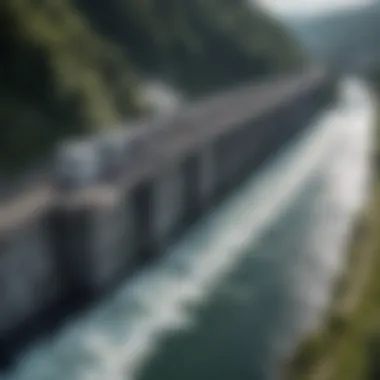
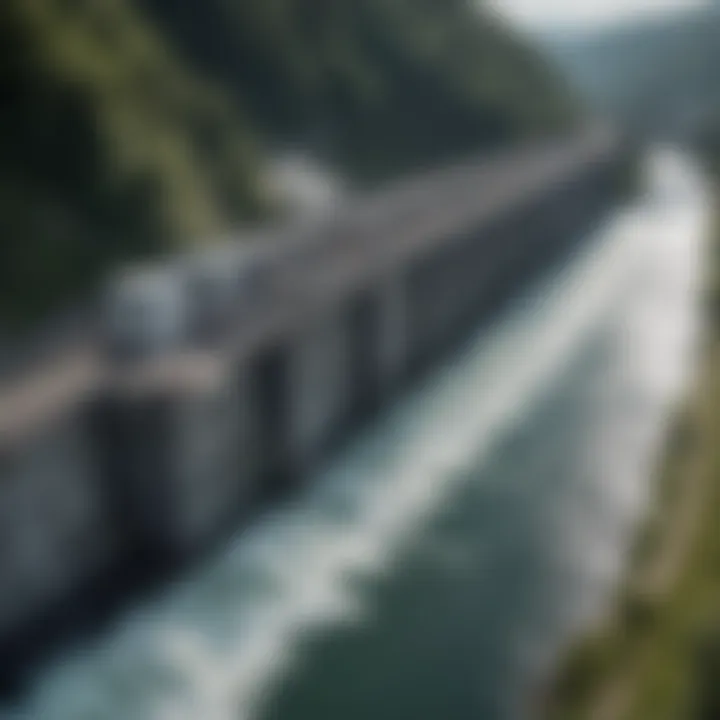
Government Policies Promoting Renewable Adoption
The role of government policies in nudging Germany toward a renewable energy future cannot be overstated. Policies act not just as guidelines but as frameworks that dictate the speed and efficiency of the transition from fossil fuels to renewable sources. In a country where energy security and environmental sustainability are paramount, these policies are crucial in shaping the trajectory of energy consumption and production.
The Renewable Energy Sources Act (EEG)
One of the cornerstones of Germany's renewable energy push is the Renewable Energy Sources Act, commonly referred to as the EEG. Instituted in 2000, the EEG first aimed to stimulate the market for renewable energy by establishing favorable conditions for new technologies. At its core, it provides a legal guarantee that renewable energy producers receive a fixed feed-in tariff for the electricity they generate. This essentially means that anyone generating energy through solar panels, wind turbines, or biomass can sell their energy back to the grid at a predetermined rate, ensuring a steady stream of income.
However, the EEG has not been without its critics. Some stakeholders point to the burden that these payment obligations place on conventional energy producers and consumers, while others argue about the necessary fine-tuning needed to adapt to the evolving energy market. Despite such concerns, the EEG represents a monumental step toward fostering a greener energy landscape in Germany.
Targets for Renewable Energy Expansion
Germany has set ambitious targets for its energy transformation, aiming for a significant increase in the proportion of energy sourcing from renewables. By 2030, the government plans for at least 65% of the country's electricity to come from renewable sources—a benchmark that underscores their commitment and urgency. Achieving this means harnessing the continuous developments in wind and solar technologies, increasing energy efficiency, and improving grid infrastructure.
Tracking these targets is not just a matter of policy but a cultural ethos in Germany. The populace is generally supportive of greater sustainability, which helps bolster governmental efforts in setting and achieving these ambitious goals.
Financing and Incentives for Renewables
Financing is another critical element in promoting the adoption of renewable energy in Germany. Various funding channels exist, from government grants to private investments, ensuring that projects have the financial backing needed to proceed. The German government has outlined several programs that provide subsidies and financial incentives for both individuals and businesses to invest in renewable technologies.
Importantly, there are also tax incentives available for installations of renewable technologies. These can help offset initial costs, encouraging more widespread use. For instance, homeowners with solar panels might be exempt from certain taxes, making it more feasible to make the switch.
The collective approach Germany takes—with a mix of policy mandates, financial incentives, and public support—demonstrates an understanding that transition won't occur in isolation. Each of these avenues works together to drive the nation closer to an energy-efficient future.
"Germany’s commitment to renewable energy is more than just a policy—it's a societal movement."
Challenges in Achieving Renewable Energy Goals
Navigating Germany's ambitious targets for renewable energy is no walk in the park. While the nation stands as a beacon for sustainable practices, it faces a labyrinth of challenges that must be addressed to achieve its renewable objectives. The evolution of energy systems is not just about technology; it includes economic implications, social dynamics, and environmental considerations. Understanding these challenges is vital, as they offer insights into what must be improved to ensure a realistic shift towards a greener energy landscape. Here are three critical areas where hurdles often appear:
Grid Infrastructure and Integration Issues
The backbone of any energy system is its grid. In Germany, the transition to renewable energy has put tremendous pressure on the existing grid infrastructure. As Germany aims to boost the proportion of renewables in its energy mix, it demands a robust system for integrating fluctuating energy sources like wind and solar power.
- Capacity Limits: The existing grid, built largely for fossil fuels, struggles with the increasing load from renewable sources. There are instances where production outstrips consumption, leading to energy waste.
- Storage Need: Variability in renewable production necessitates enhanced energy storage solutions. Without adequate storage, peak demand cannot always be met, resulting in potential blackouts.
- Transmission Bottlenecks: The movement of energy from regions rich in production, like the northern wind-heavy areas, to consumption centers in the south, requires upgrades that are often delayed by regulatory hurdles.
"Overcoming these grid challenges is essential to unlock the full potential of renewable energy and ensure its sustainability in the long run."
Public Perception and Acceptance
Public support and awareness are indispensable in the renewable narrative. However, acceptance of large-scale renewable projects varies among the populace. A divergent public perception has led to frictions that can derail initiatives.
- Visual Impact: Wind farms and solar arrays can drastically alter landscapes, eliciting aesthetic objections from communities.
- Local vs. Global: While many citizens support renewables in theory, they may resist projects that affect their own living environments due to NIMBY (Not In My Back Yard) sentiments.
- Misinformation: Addressing the gap in public knowledge about renewable technologies is crucial. Misunderstandings about cost, environmental impact, and technology effectiveness can hinder progress.
Economic and Environmental Trade-offs
As Germany navigates its transition, balancing economic viability with environmental integrity often reveals tough choices. The shift to renewables isn't just about green energy; it's also a question of money and market stability.
- Investment Costs: Initial capital outlays for renewable technologies and necessary infrastructure upgrades can be daunting, especially for smaller municipalities.
- Job Displacement: Transitioning away from traditional energy sources entails job losses in those sectors. While new jobs in renewables are created, the transition isn’t always seamless.
- Life Cycle Assessment: The environmental benefits of renewables must be weighed against their manufacturing and installation impacts, such as resource depletion and pollution.
Technological Innovations Driving Renewables
Technological innovation is the lifeblood of the renewable energy sector in Germany. This critical element not only enhances the efficiency of energy production but also contributes to cost reduction, which is paramount in the ongoing transition from traditional energy sources. Innovative technologies pave the road to a more sustainable energy ecosystem, helping to ensure that Germany meets its ambitious climate goals. The continuous evolution in renewable technologies confirms the commitment of the German government and its population to adopt cleaner energy solutions.
By examining specific advancements in solar energy, wind energy, and energy storage, we can appreciate how these technologies are shaping the future of Germany’s renewable landscape.
The Role of EU Policies in Germany's Renewable Agenda
As Germany strives to carve a path towards a sustainable energy future, the influence of European Union (EU) policies cannot be overstated. These regulations not only shape national strategies but also serve as a backbone for collective goals among member states. The EU's commitment to reducing greenhouse gas emissions significantly aligns with Germany's own ambitious objectives, creating a synergy that propels both local and regional advancements in renewable energy.
When it comes to renewable energy, EU policies function as both a guide and a framework for Germany. They provide essential targets that act like a compass, steering Germany toward increased investment in renewable sources, such as wind and solar. Moreover, these policies underscore the importance of collaboration between countries, ensuring that advancements in one area benefit the whole of Europe. This interconnected approach stands to boost not just technological innovation but also economic resilience.
EU Renewable Energy Directive
The EU Renewable Energy Directive is a cornerstone in the union's drive for a more sustainable future. This directive aims to ensure that at least 32% of the EU's energy mix comes from renewable sources by 2030. For Germany, this goal resonates deeply with its own Energiewende initiative, which emphasizes a shift from fossil fuels to clean energy.
One notable aspect of the directive is its demand for member states to create national renewable energy action plans. In layman’s terms, it’s like having a roadmap that illustrates how each country plans to meet its renewable energy targets. This ensures accountability and fosters competition among countries to innovate and enhance their green energy technologies.
Furthermore, the directive has set a foundation for financing by mandating that each EU country allocate funds towards renewable energy projects. Germany, leveraging its strong industrial base, can adapt and excel by tapping into these shared resources.
Impact on German Energy Regulations


The impact of EU policies on German energy regulations is like pebbles creating ripples in a pond. When the EU lays down comprehensive regulations, they inevitably influence how Germany formulates its own energy policies. The guidelines drive transparency and compatibility, allowing German regulations to mirror EU standards. This alignment not only facilitates the movement of goods and technology across borders but also strengthens Germany's position in the global renewable energy market.
Additionally, the EU's emphasis on sustainability and environmental responsibility has seeped into Germany’s regulatory processes. For instance, Germany has incorporated stricter emission targets as outlined in EU policies, leading to a shift toward cleaner technologies and practices.
Moreover, the EU's carbon pricing and trading systems provide a financial incentive to reduce emissions. As a result, German energy producers are motivated to adopt renewable sources, as it significantly lowers their carbon costs. This leads to an eco-friendly energy landscape where renewables gain traction in both policy and practice.
"Germany's commitment to renewable energy is not just a national endeavor, but part of a larger European movement toward sustainability."
Socio-Economic Impacts of Renewable Energy Expansion
The expansion of renewable energy in Germany doesn't just grab headlines for its environmental importance; it also has far-reaching socio-economic implications. As the country emerges as a leader in this field, the interplay between energy policies and socioeconomic developments becomes increasingly significant. Understanding these impacts helps not only in measuring the success of Germany’s energy transition but also in recognizing its potential influence on the broader European strategies.
The integration of renewable energy sources adds layers to the economy, from job creation to investment opportunities, reaching into almost every corner of society. In a landscape as complex as that of energy policy, these socio-economic impacts can serve as vital indicators of overall success.
Job Creation in the Renewable Sector
In the renewable energy sector, job creation has become a bright spot amidst broader economic fluctuations. Germany’s push towards renewable sources, such as wind and solar, has developed thousands of new jobs in various fields. Generally speaking, the renewable energy sector presents a diverse range of opportunities. This includes everything from engineering and technical positions to research and development tasks, as well as jobs in installation and maintenance.
Eager to tap into this growth, many training programs have sprung up to equip the workforce with necessary skills. For instance, vocational colleges and training centers provide apprenticeships in solar panel installation or turbine maintenance, fostering a skilled labor force that is in demand. This focus on retraining aligns with the country's commitment to make the transition as smooth as possible for workers whose positions may be rendered obsolete in traditional energy sectors.
"The renewable sector now offers approximately 340,000 jobs, marking a substantial increase over a decade, showcasing the sector's capacity for growth."
In addition to direct employment gains, there are also indirect job opportunities that emerge in supply chains and associated industries. Everything from hardware suppliers to transportation services benefits from the increased activity in the renewable space. This ripple effect considerably boosts the job market, particularly in regions that have embraced renewable projects.
Regional Development and Investment
The investment in renewable energy projects leads to significant regional development. This is not merely about erecting wind turbines or solar arrays; it bolsters local economies by creating infrastructure, improving energy resilience, and attracting new business opportunities.We can visualize this impact through various economic indicators. For example, towns that host wind farms often see a surge in local business activities, from increased demand for accommodations to more restaurant visits during construction phases.
Furthermore, many municipalities invest in renewable projects as a way to revitalize areas. This creates a positive feedback loop: as new businesses open and contribute tax revenues, local governments can reinvest in community services and infrastructure, enhancing the overall quality of life.
- Investment in local projects can lead to:
- Increased tax revenues.
- Boosted local employment.
- Enhanced public services and infrastructure.
Hence, it is clear that renewable energy is not just a commitment to environmental sustainability but a strategic move with palpable socio-economic benefits. However, these developments are not without their challenges. Some communities may resist large-scale projects due to concerns over land use or changes to local landscapes. Balancing these concerns with the undeniable economic benefits remains a task for policymakers.
The socio-economic impacts of renewable energy expansion in Germany point towards a promising horizon. By cultivating job opportunities and driving regional investments, the country is not only shaping its energy future but also fostering a more resilient economy.
Future Outlook for German Renewable Energy
As Germany stands at the crossroads of its energy future, it is vital to sift through the various aspects that shape its renewable energy landscape. A keen understanding of the future outlook for German renewable energy can delineate the pathways we might expect to see unfold in the coming years. It encompasses not just aspirations but also the tangible measures needed to transform these ambitions into reality. Hence, it’s a topic that resonates with urgency and importance in this article.
Germany's commitment to renewable energy isn't merely a political statement; it functions as a blueprint for long-term sustainability and environmental stewardship. The ramifications extend beyond national borders, influencing EU-wide energy policies and global climate initiatives. With its current blending of innovative technology and a robust regulatory framework, Germany not only leads but also sets benchmarks for others.
With that backdrop, let’s delve into the components that constitute Germany's long-term energy goals.
Long-term Energy Goals
Germany’s long-term energy goals reflect an ambitious roadmap that envisions a significant reduction in greenhouse gas emissions. The overarching target is to derive at least 65% of its electricity from renewable sources by 2030, a substantial leap from the 42% achieved in recent years. The strategic focus includes:
- Carbon Neutrality by 2045: Germany aims to become carbon neutral by 2045, a goal that necessitates a drastic transformation of industrial practices, urban planning, and residential energy consumption.
- Expansion of Renewable Infrastructure: Investments in wind, solar, and other renewable technologies are crucial. The government has set specific targets for increasing the number of onshore and offshore wind farms and improving solar capacity.
- Decentralized Energy Systems: Emphasis is placed on shifting energy production to local levels, which not only strengthens energy security but also fosters community engagement in the transition process.
- Grid Modernization: To facilitate increased renewable energy adoption, the electric grid requires modernization to handle fluctuations and enhance connectivity across various sources.
"Setting these long-term energy goals is more than just numbers; it's about reshaping our relationship with energy and the environment to ensure what we leave for future generations is a recovered planet, not a depleted one."
Predicted Trends in Renewable Energy Adoption
Looking towards the horizon, several trends appear to be germinating within Germany's renewable energy scene. These expected movements are crucial in shaping how the nation's energy landscape will take form over the next decade:
- Increased Battery Storage Solutions: With the rise of intermittent energy sources like solar and wind, reliance on advancements in battery storage technology is expected to soar. This will allow for better energy management and reduce supply fluctuations.
- Hydrogen as a Key Energy Carrier: Hydrogen technology is gaining traction as a clean energy solution. Germany is investing heavily in researching and developing green hydrogen to serve as a versatile energy carrier in transportation and industry.
- Electric Mobility Integration: As the nation pushes for electric vehicles, the integration of renewables into this sector adds another layer of complexity and opportunity. The infrastructure for charging stations is expanding with plans pegged to solar and wind energy generation.
- Government Subsidies and Incentives: Future policies will likely lean heavily on incentives that promote both industries and consumers to engage with renewable energy solutions, which could significantly drive up adoption rates.
- Public Participation in Energy Production: Public acceptance and involvement in energy projects will continue to grow, with models for community-owned wind and solar projects likely becoming more commonplace.
In summary, the future of Germany's renewable energy landscape is brimming with potential. As each of these elements intertwines, the shift toward a sustainable energy portfolio will not only be possible but probable, establishing Germany as a beacon for holistic energy reform.
Culmination
The pursuit of renewable energy in Germany serves as a critical element in establishing a sustainable energy framework. As the nation moves toward its ambitious climate goals, the path taken in developing and integrating renewable energy sources offers valuable insights into energy transition strategies. It’s essential to recognize that the findings presented throughout the article are not merely statistics or policies on paper; they illustrate a concerted effort towards a greener future.
Summarizing Key Findings
The article has revealed several pivotal points about Germany's renewable energy landscape. Notably,
- Diverse Energy Mix: The substantial contribution of solar, wind, and bioenergy highlights a diverse approach towards energy generation. As Germany pushes to meet its electrification targets, it becomes increasingly clear that relying on multiple sources remains crucial.
- Government Frameworks: The Renewable Energy Sources Act (EEG) and associated policies stand as key instruments facilitating this transition. They ensure that investments flow into renewable projects while setting legally binding targets.
- Challenges Identified: Despite notable advances, challenges linger, particularly around grid integration and public acceptance. The article showcases how these hurdles could affect the long-term sustainability of renewable initiatives.
"Germany’s energy landscape is not just an esoteric subject; it represents a living laboratory experimenting with renewables, policies, and consumer behavior.”
The Role of Innovation and Policy in Future Success
In looking ahead, it's clear that innovation alongside robust policy frameworks will guide Germany’s renewable energy journey.
- Technological Advances: Continuous innovation in storage technology and energy efficiency must be prioritized. Innovations serve as catalysts for progress, making energy generation cleaner and more reliable. For example, research into solid-state battery technologies shows potential for enhancing energy storage capabilities, which is essential in variable renewable energy scenarios.
- Embracing EU Initiatives: Aligning with broader EU goals can enhance resource-sharing and collaborative development efforts across member states. The synergy achieved through policies at the EU level can amplify Germany's efforts in achieving its renewable energy targets.
- Public Engagement: Lastly, enhancing public support through educational campaigns can play a significant role. Community involvement in renewable projects can foster acceptance and encourage local investment, creating a sustainable foundation for the energy transition.







